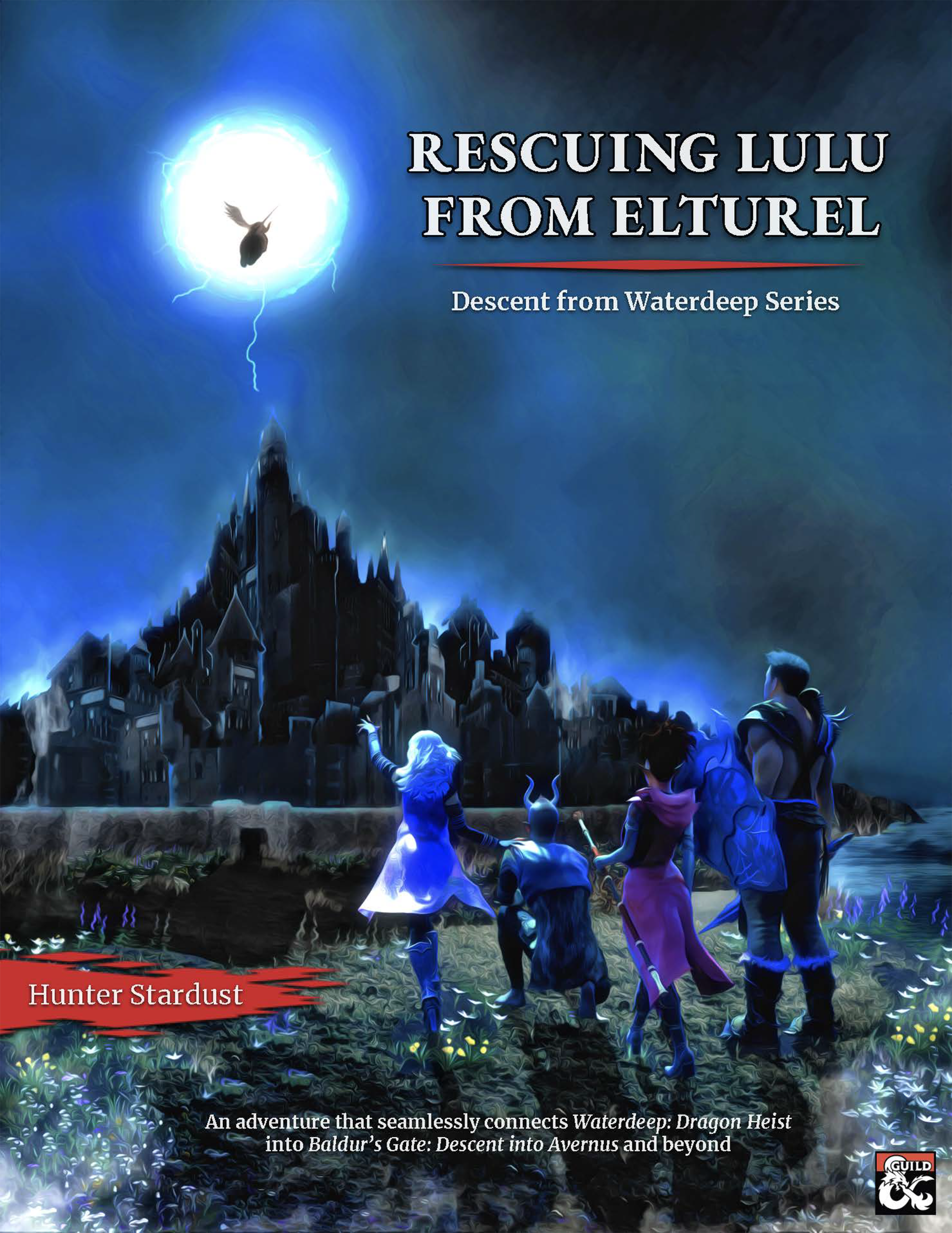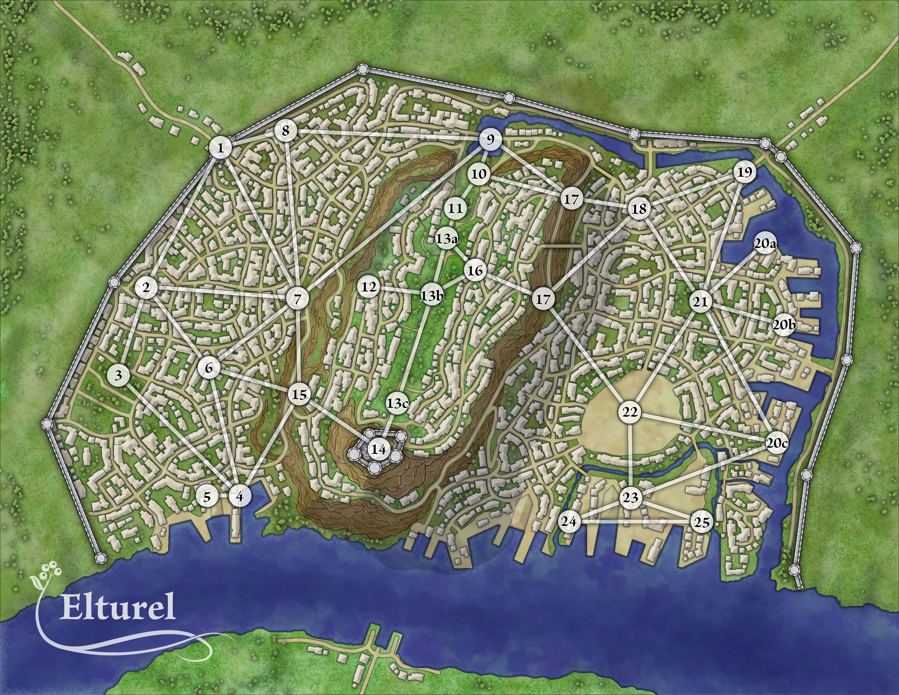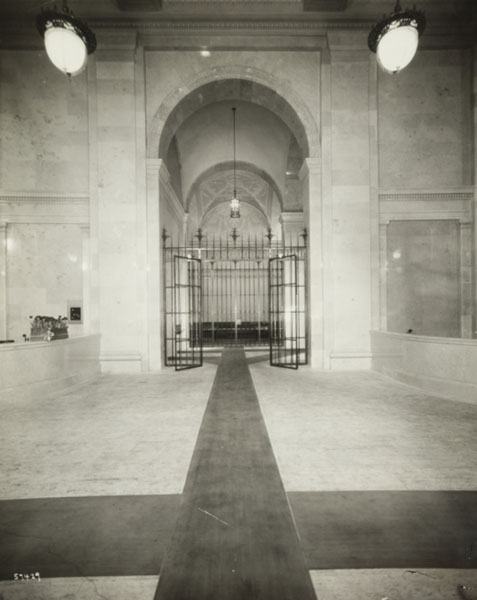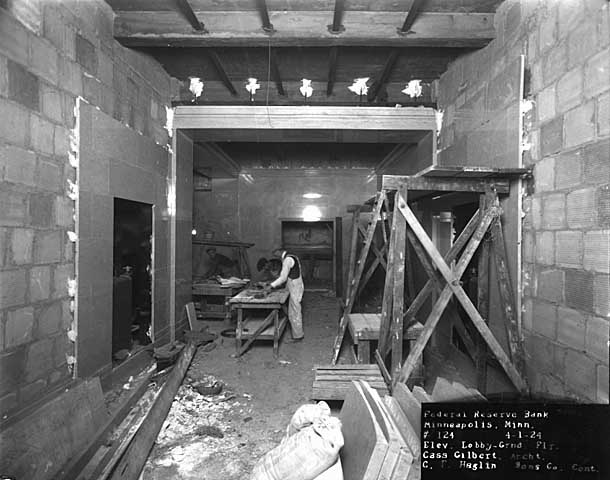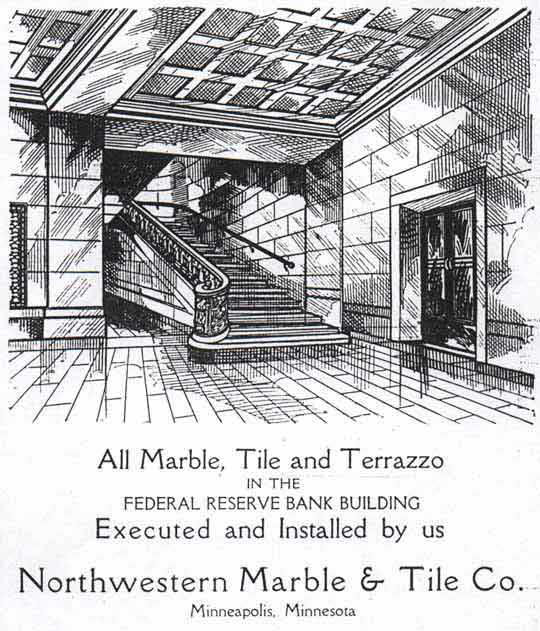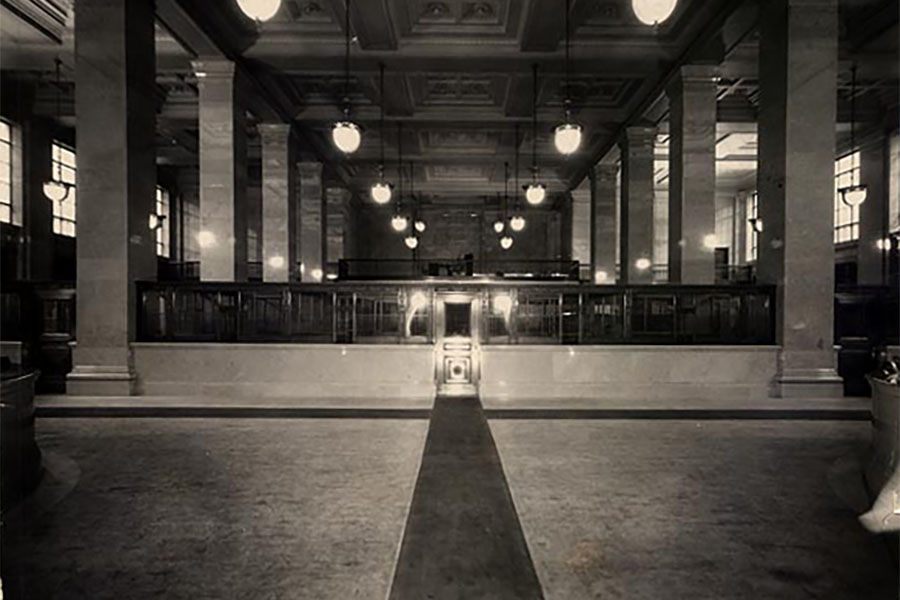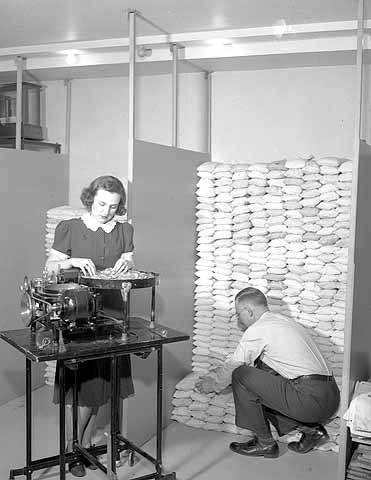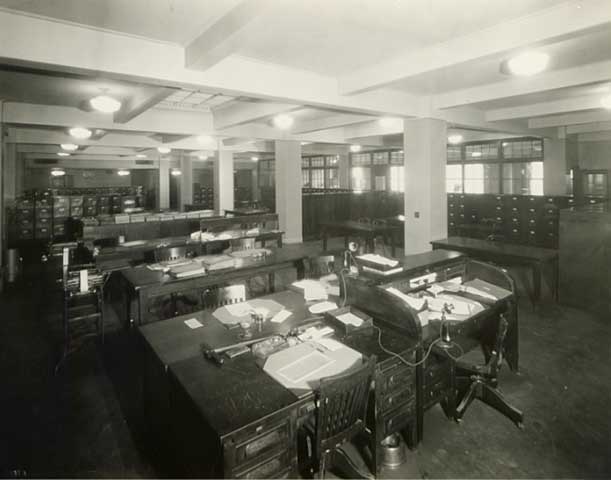Rescuing Lulu From Elturel is the second part of the Descent From Waterdeep series, which is designed to reshape Waterdeep: Dragon Heist and Descent Into Avernus into a cohesive campaign.
Don’t bother looking for the other three parts, though, because they haven’t been released yet. And that’s okay, because Rescuing Lulu is quite capable of not only standing on its own, but demanding your attention.
If idea of weaving Dragon Heist and Descent Into Avernus into a single campaign doesn’t sound appealing, you can ignore that bit, too, because Rescuing Lulu can also be used:
- To weave Elturel into a Tyranny of Dragons
- As a pointcrawl supplement detailing Elturel before its Fall.
- As a supplement to the Alexandrian Remix of Descent Into Avernus.
And more!
If anything, I think the default frame of Rescuing Lulu — in which the PCs meet Lulu during the events of Waterdeep: Dragon Heist, Lulu is kidnapped by Zarielite cultists and taken to Elturel, and the PCs follow — is more a hindrance to this book than anything else. (But more on that later.)
THE WEAVE
The first thing I love about Rescuing Lulu is how Hunter Stardust weaves together material from a multitude of sources, particularly other DM’s Guild books. This is something I’ve seen a few other DM’s Guild authors attempt, but it’s often awkward. Stardust, on the other hand, pulls it off smoothly and effortlessly, and Rescuing Lulu could be an exemplar for others interested in doing the same.
The reason I love this is that, when done well, it can very easily elevate the value of all the integrated works into something greater than the sum of its parts. If you’re familiar with how my Avernus Remix approached the Avernian Hexcrawl, then you’ve seen similar praxis.
On that note, one of the sources Stardust uses is, in fact, the Alexandrian remixes of both Dragon Heist and Descent Into Avernus. Rescuing Lulu is specifically designed to be integrated with the remixes, although options are given for those using strictly the published versions of the campaigns.
Other sources include:
- Blue Alley
- Hellturel
- The Hellriders Keep
- Baldur’s Gate: Fall of Elturel
- Encounters in Avernus
(If you’re unfamiliar with these supplements, I’ve previously done reviews of most of them, which you can check out here.)
While juggling and integrating all of this material, Stardust is also constantly offering options: Using Blue Alley in Chapter 2 of Dragon Heist? Here’s how you can use it to introduce Lulu. Not doing that? Here are three other options.
Stardust is meticulous with his cross-referencing and his notes are smart, thoughtful, and flexible. The only possible improvement here would be hyperlinks.
THE MAP
The second thing I love about Rescuing Lulu is the map of pre-Fall Elturel. Created by Meshon Cantrill, this map is absolutely stunning:
It is an absolutely perfect companion piece to Jared Blando’s post-Fall map of the city in Descent Into Avernus, which is no mean feat.
Frankly, even if you used absolutely nothing else from Rescuing Lulu, the book would be worth buying just for the multiple, high-resolution versions of the city map.
THE POINTCRAWL
Within its many variations, Rescuing Lulu is built around an investigation spine:
- The PCs meet Lulu.
- Lulu is kidnapped by Zarielite cultists, who take her to Elturel to be sacrificed as part of a ritual.
- The PCs track Lulu to Elturel.
- The PCs explore Elturel, which is described using a pointcrawl.
- While exploring the city, they discover clues indicating that Lulu can be found at a ritual masquerading as a wedding ceremony.
- The PCs perform a heist at the wedding ceremony, rescuing Lulu and hopefully disrupting the ritual.
- The cultists all shrug and invite the PCs to have some cake. (Hmm… We’ll come back to that.)
The real heart of Rescuing Lulu, therefore, is the Elturian pointcrawl. (This also takes up roughly half of the book’s 65 pages, with another ten pages being given over to the final heist scenario and the rest mostly fleshing out the preliminary investigation and epilogue.)
This pre-Fall ‘crawl of the city is a nice companion piece to the post-Fall ‘crawl of Hellturel found in the Avernus Remix. Every location is richly detailed and ready-for-play, being sourced and adapted from a variety of sources including Volo’s Guide to the Sword Coast, Forgotten Realm Adventures, and the Alexandrian Remix itself. It sets up the structure of urban pointcrawling for groups unfamiliar with it, and also gives the players an intimate familiarity with the city which will makes its post-apocalyptic incarnation in Descent Into Avernus all the more shocking.
RESERVATIONS
So there’s clearly a lot of like about Rescuing Lulu From Elturel, and I’ve already told you that I think you should buy the book if you’re planning to do anything with pre-Fall Elturel in your campaign. But I do have some reservations that you should be aware of before snagging your copy.
First, the book could really benefit from some rigorous proofreading. There are a lot of typos strewn across the text, most of them of minor significance but a few which seem to create significant errors.
Second, there’s some material that I find to be quite awkward in its execution. For example, there are several instances where encounter checks are made by having the DM roll a die and then having the players guess a number: if the number matches, the encounter happens. It’s difficult for me to imagine doing that at the actual gaming table. Perhaps the intention is to engage the players in some way? For me, it doesn’t work.
Third, if you are planning to use Rescuing Lulu in conjunction with the Alexandrian Remix of Descent Into Avernus, you should be aware that there are some significant changes to continuity, most of which are not clearly indicated. You’ll need to keep on your toes to make sure everything lines up.
Fourth, Rescuing Lulu is whimsical and kinda wacky. For example, there’s Morrale the Beerholder — an alcoholic beholder who serves drinks at a tavern and uses random eyebeam attacks to assault PCs who don’t tip him. This tone is not really my jam, particularly for a Descent Into Avernus campaign. It’s significant enough that I, personally, wouldn’t use this book as written. But I know that for many people this is exactly the tone they’re looking for, and if that’s the case for you, then you’ll love this!
The biggest reservation I have when it comes to Rescuing Lulu, unfortunately, is the adventure itself. There’s so much cool material and so many varied tools packed into its pages that could be useful in so many ways… but which is instead made subservient to a specific conceit.
For example, it feels like there’s an alternate version of this book which is just called ELTUREL and features a pointcrawl sourcebook for the city along with additional material (like a Rescuing Lulu adventure) that can be used in conjunction with the pointcrawl sourcebook. And that version of the book is a lot more useful to a lot more people.
As written, however, the pointcrawl becomes subservient to the adventure, which greatly limits its potential utility. It also becomes quite heavy-handed in its foreshadowing of the Fall, which ties into some of the continuity issues I mentioned before. As depicted here, everyone in the city seems ready for the Fall to happen, and are often giving the PCs a nudge-and-a-wink about it, and there are so many Zarielite cultists cavorting in the street that everyone who isn’t a cultist is like, “Man, have you seen all the cultists around town?”
So as you’re considering whether to add Rescuing Lulu From Elturel to your own library, you should keep these reservations in mind. But, as I’ve already said, this is a supplement which, despite my reservations, I recommend.
GRADE: B-
This review was requested and sponsored by a patron of the Alexandrian.

